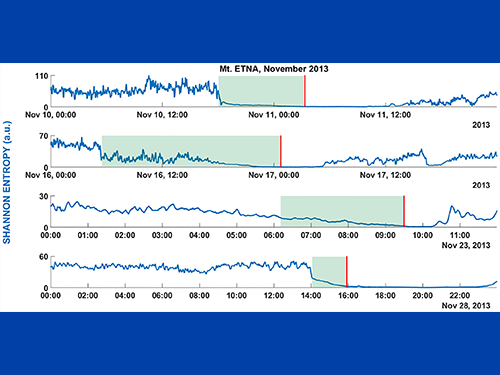Volcanic Early Warning Using Shannon Entropy: Multiple Cases of Study

Rey-Devesa P., C. Benítez, J. Prudencio, L. Gutiérrez, G. Cortés-Moreno, M. Titos, I. Koulakov, L. Zuccarello, J.M. Ibáñez (2023).
Journal of Geophysics Research – Solid Earth, 128(6).
https://doi.org/10.1029/2023JB026684
Abstract
he search for pre-eruptive observables that can be used for short-term volcanic forecast remains a scientific challenge. Pre-eruptive patterns in seismic data are usually identified by analyzing seismic catalogs (e.g., the number and types of recorded seismic events), the evolution of seismic energy, or changes in the tensional state of the volcanic medium as a consequence of changes in the volume of the volcano. However, although successful volcanic predictions have been achieved, there is still no generally valid model suitable for a large range of eruptive scenarios. In this study, we evaluate the potential use of Shannon entropy as short-term volcanic eruption forecasting extracted from seismic signals at five well studied volcanoes (Etna, Mount St. Helens, Kilauea, Augustine, and Bezymianny). We identified temporal patterns that can be monitored as short-term eruptive precursors. We quantified the decay of Shannon entropy prior to eruptions, noting that changes appear between 4 days and 12 hr before. When Shannon entropy is combined with the temporal evolution of other features (i.e., energy, kurtosis, and the frequency index), we can elaborate physical models according to the occurring volcanic processes. Our results show that pre-eruptive variation in Shannon entropy is a confident short-term volcanic eruption monitoring tool.


Devi effettuare l'accesso per postare un commento.